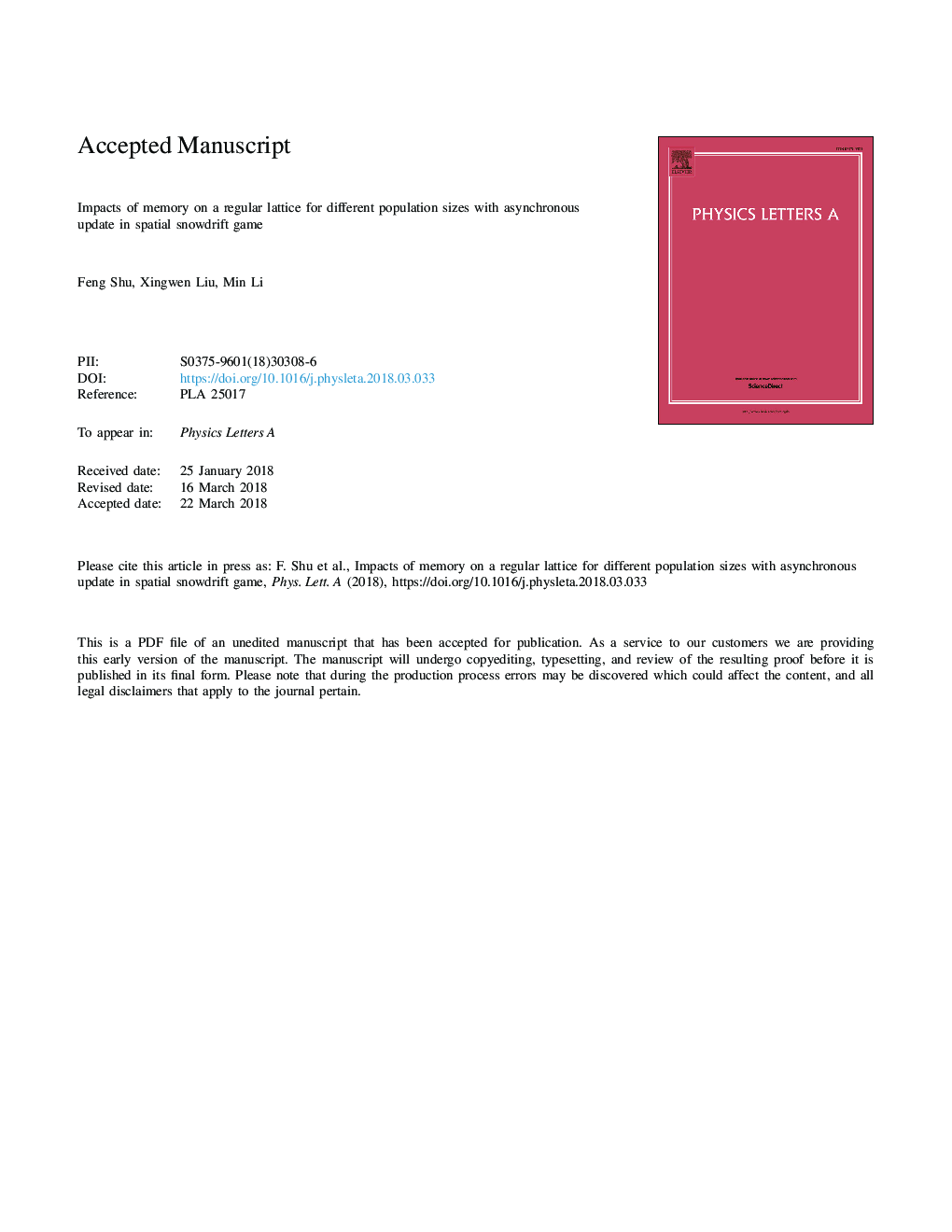| Article ID | Journal | Published Year | Pages | File Type |
|---|---|---|---|---|
| 8203458 | Physics Letters A | 2018 | 20 Pages |
Abstract
Memory is an important factor on the evolution of cooperation in spatial structure. For evolutionary biologists, the problem is often how cooperation acts can emerge in an evolving system. In the case of snowdrift game, it is found that memory can boost cooperation level for large cost-to-benefit ratio r, while inhibit cooperation for small r. Thus, how to enlarge the range of r for the purpose of enhancing cooperation becomes a hot issue recently. This paper addresses a new memory-based approach and its core lies in: Each agent applies the given rule to compare its own historical payoffs in a certain memory size, and take the obtained maximal one as virtual payoff. In order to get the optimal strategy, each agent randomly selects one of its neighbours to compare their virtual payoffs, which can lead to the optimal strategy. Both constant-size memory and size-varying memory are investigated by means of a scenario of asynchronous updating algorithm on regular lattices with different sizes. Simulation results show that this approach effectively enhances cooperation level in spatial structure and makes the high cooperation level simultaneously emerge for both small and large r. Moreover, it is discovered that population sizes have a significant influence on the effects of cooperation.
Keywords
Related Topics
Physical Sciences and Engineering
Physics and Astronomy
Physics and Astronomy (General)
Authors
Feng Shu, Xingwen Liu, Min Li,
